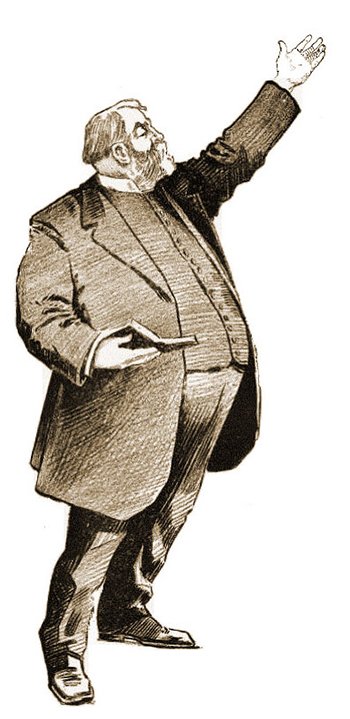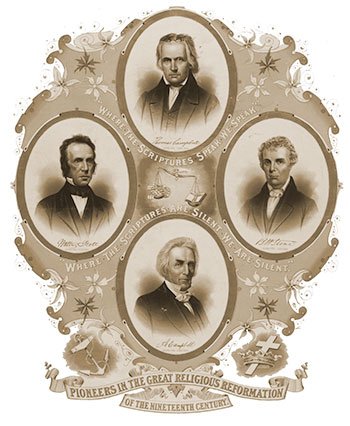The 1809 Middlebury Revival: A History
The 1809 Middlebury Revival was a significant religious awakening that occurred in Middlebury, Vermont, during the Second Great Awakening. This revival, characterized by its spontaneous and fervent nature, had a profound impact on the spiritual character of the town and its surrounding areas. This article considers the history of this revival, exploring its origins, key figures, and lasting consequences.
Religious Landscape of Middlebury Prior to 1809
Before the 1809 revival, the spiritual landscape in Middlebury, Vermont, was shaped by a complex interplay of legal frameworks and denominational influences. While Vermont did not have an established state church, early laws mandated that citizens pay taxes to support the town church, regardless of their personal beliefs 1.
This system, while promoting religious observance, also raised concerns about religious freedom and the separation of church and state, with some citizens arguing against compelled support for religious institutions 1. This tension likely played a role in shaping the spiritual climate leading up to the revival.
Adding to this complexity, the “New Divinity” theology, a form of Calvinism that emphasized human responsibility in salvation, was gaining influence in Middlebury 2. This theological perspective likely contributed to the discussions and debates surrounding religious beliefs in the town.
Congregationalism held a prominent position in Vermont, with its influence extending to educational institutions like Middlebury College 3. However, other denominations, including Baptists, Quakers, and Episcopalians, also had a presence in the state 4. This diverse religious landscape set the stage for the revivals that would sweep through the region during the Second Great Awakening.
The Middlebury Burial Ground provides a tangible link to the individuals who may have shaped the town’s religious life during that period 5. This burial ground contains the graves of prominent figures from the era, including those who likely held influence in religious matters.
Furthermore, architectural styles in Middlebury, such as the Federal style prevalent during that time, often reflected the religious and social values of the community 6. These architectural expressions provide a broader cultural context for understanding the town’s religious character.
Judge Painter, a prominent figure in Middlebury, was actively involved in the community and likely played a role in the town’s religious landscape 7. His presence and influence add a specific example of how individuals contributed to the religious life of Middlebury.
Relationship to the Second Great Awakening
The 1809 Middlebury Revival was an integral part of the Second Great Awakening, a widespread religious movement that swept through the United States in the late 18th and early 19th centuries 8. This period saw a surge in religious dedication, characterized by emotional preaching, calls for individual’s conversion, and the rise of new religious denominations.
The Middlebury Revival, with its emphasis on personal religious experience and spiritual renewal, exemplifies the key characteristics of the Second Great Awakening. The emotional nature of the Middlebury Revival, with its spontaneous gatherings and fervent expressions of faith, aligns with the broader characteristics of the Second Great Awakening, which often involved intense religious experiences and emotional conversions 8.
Revivals in Neighbouring Towns
The religious fervour that ignited the Middlebury Revival was not confined to the town itself. Neighbouring communities also experienced religious awakenings during this period, demonstrating the widespread impact of the Second Great Awakening in Vermont and its surrounding areas. In Concord, Vermont, a revival began around the end of 1809, resulting in a significant increase in church membership 9.
This revival further spread to Guildhall, Vermont, where it had a profound impact on the community, with a large percentage of the population experiencing conversions and joining the church 9. These revivals in neighbouring towns highlight the interconnectedness of religious experiences during the Second Great Awakening and suggest that the Middlebury Revival was part of a larger regional phenomenon.
Prior Revivals in Middlebury and Surrounding Areas
While the 1809 Middlebury Revival stands out as a significant event, it was not the first instance of religious awakening in the area. The history of churches in Vermont, particularly in towns like Hartland, reveals a pattern of religious fervour and denominational shifts 10. These earlier revivals and the associated theological debates contributed to a heightened religious consciousness in the region, preparing the ground for the events of 1809 10.
The Spark of the 1809 Revival
The 1809 Middlebury Revival can be traced back to a seemingly ordinary gathering of young people from the Congregational Church on October 26, 1809 1. During their journey to a social event, some of the youths experienced a conviction of conscience, realizing the unwholesome nature of their intended entertainment. This led to a commitment to focus on religious discussions, culminating in a “party” where only religious subjects were allowed.
This unusual gathering, though not outwardly spectacular, marked the beginning of a spiritual awakening among the youth. A subsequent church service on October 31, 1809, further intensified the religious fervour, with a former minister delivering a powerful sermon that deeply moved the congregation. These events served as the catalyst for the revival that would soon engulf the town.
The young people’s decision to prioritize religious discussions over their planned social event highlights the role of individual agency and spiritual seeking in sparking religious awakenings 1. Their deliberate choice to engage in religious discourse suggests a growing desire for spiritual meaning and a receptiveness to religious experiences, which likely contributed to the revival’s momentum.
Leaders of the 1809 Middlebury Revival
While the 1809 Middlebury Revival was characterized by its spontaneous and grassroots nature, certain individuals likely played crucial roles in guiding and shaping the movement. Although research material does not provide specific information about the leaders of this particular revival, it does offer insights into the broader religious landscape of the time.
Congregational ministers, who held a prominent position in Vermont’s religious life, may have played a significant role in leading and organizing the revival 11. Their influence within the community and their theological training would have equipped them to guide the spiritual awakening and provide religious instruction to those seeking conversion.
Furthermore, prominent community leaders, such as Judge Painter, may have also contributed to the revival’s momentum through their social standing and influence 7. Their support and participation could have encouraged others to engage in the religious enthusiasm and embrace the revival’s message of the good news of salvation.
Churches Involved in the 1809 Middlebury Revival
The Congregational Church in Middlebury played a central role in the 1809 Revival 12. The revival’s origins among the youth of this church and the subsequent church services held there indicate its significance in the movement. The church’s established presence in the community and its connection to Middlebury College likely contributed to its influence during the revival.
Given the broader religious climate of the time and the presence of other denominations in Middlebury, it is possible that these groups were also involved in or influenced by the revival. The Baptists, for example, had a growing presence in Vermont, and their emphasis on personal religious experience would have resonated with the revival’s message 13.
Middlebury College, with its strong ties to the Congregational Church, may have also played a role in the revival 14. The college’s demographics and the religious affiliations of its student body likely influenced the revival’s reach and impact.
Personal Testimonies of Participants
Unfortunately, records do not provide specific personal testimonies from participants in the 1809 Middlebury Revival. However, it does offer insights into the types of religious experiences common during the Second Great Awakening, such as conversions and heightened spiritual awareness 15. These accounts, while not directly related to the Middlebury Revival, provide a glimpse into the emotional and spiritual intensity that characterized religious awakenings of this era.
They suggest that participants in the Middlebury Revival may have experienced similar transformations, marked by a profound sense of conviction, a newfound commitment to Christ, and a desire to share their religious experiences with others.
Immediate and Lasting Results of the Revival
The 1809 Middlebury Revival had both immediate and lasting effects on the community. In the short term, it led to increased religious zeal, with individuals experiencing conversion and a renewed commitment to their faith. The revival also fostered a sense of unity and purpose within the community, as people came together to participate in Christian meetings and activities.
The long-term effects of the revival are more challenging to ascertain. However, it likely contributed to the growth of religious institutions and a strengthening of religious values within the community. The revival will have also influenced social reform movements and community initiatives, as spiritual awakenings often inspired individuals to address social ills and promote moral behaviours.
Works cited
- The Formation of Town Churches – Vermont Historical Society, accessed on December 15, 2024, https://vermonthistory.org/journal/misc/FormationOfTownChurches.pdf
- Seth Storrs, Congregationalism, and the Founding of Middlebury College – Vermont Historical Society, accessed on December 15, 2024, https://vermonthistory.org/journal/69/vt693_402.pdf
- Congregationalism in the United States – Wikipedia, accessed on December 15, 2024, https://en.wikipedia.org/wiki/Congregationalism_in_the_United_States
- A General History of the Baptist Denomination, David Benedict | The Reformed Reader, accessed on December 15, 2024, https://www.reformedreader.org/history/benedict/baptistdenomination/vermont.htm
- Middlebury Village Continued – A Walking History of Middlebury – The Middlebury Sites Network – Middlebury College, accessed on December 15, 2024, https://sites.middlebury.edu/walkingmiddlebury/middlebury-village-continued/
- Middlebury’s Marble Fireplaces – Vermont Historical Society, accessed on December 15, 2024, https://vermonthistory.org/journal/misc/MiddleburysMarbleFireplaces.pdf
- VHG Middlebury, Addison County, Vt. – RootsWeb, accessed on December 15, 2024, http://sites.rootsweb.com/~vtwindha/vhg1/0050_middlebury.htm
- Second Great Awakening – Wikipedia, accessed on December 15, 2024, https://en.wikipedia.org/wiki/Second_Great_Awakening
- 1809 Revivals in Concord, Guildhall, & Norwich, Vermont – BEAUTIFUL FEET, accessed on December 15, 2024, https://romans1015.com/concord/
- Vermont History, accessed on December 15, 2024, https://vermonthistory.org/journal/misc/HartlandChurches.pdf
- Christians Of New England – History of the Restoration Movement, accessed on December 15, 2024, https://www.therestorationmovement.com/books/newengland.htm
- Middlebury Congregational Church – Sheldon Relic Chair, accessed on December 15, 2024, https://sites.middlebury.edu/sheldonrelicchair/2018/01/23/middlebury-congregational-church/
- The Village Tour: South Pleasant Street and Cross Street – The Middlebury Sites Network, accessed on December 15, 2024, https://sites.middlebury.edu/walkingmiddlebury/south-pleasant-street/
- Middlebury College – Wikipedia, accessed on December 15, 2024, https://en.wikipedia.org/wiki/Middlebury_College
- An account of a Revival of Religion in Middlebury, Conn., in the years 1799 and 1800, Part 4, accessed on December 15, 2024, https://orwellbible.org/2014/03/18/an-account-of-a-revival-of-religion-in-middlebury-conn-in-the-years-1799-and-1800-part-4/



